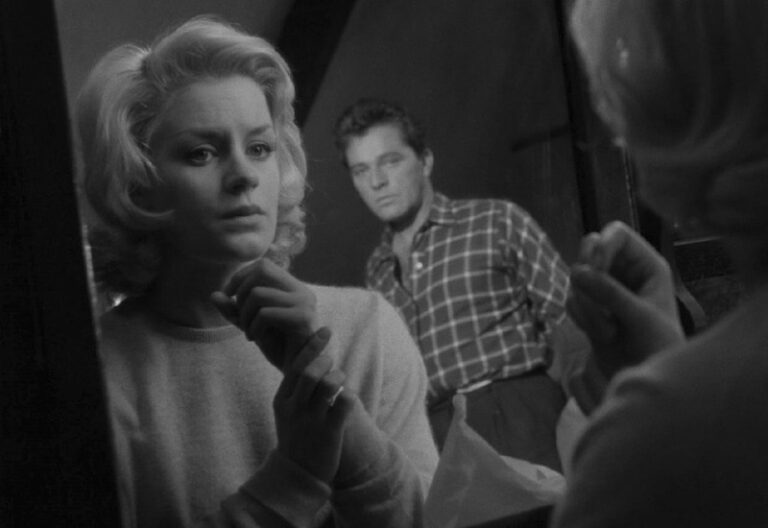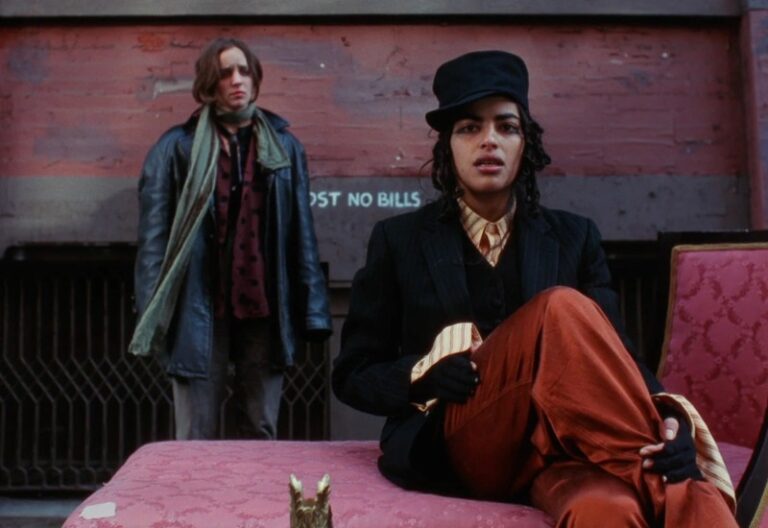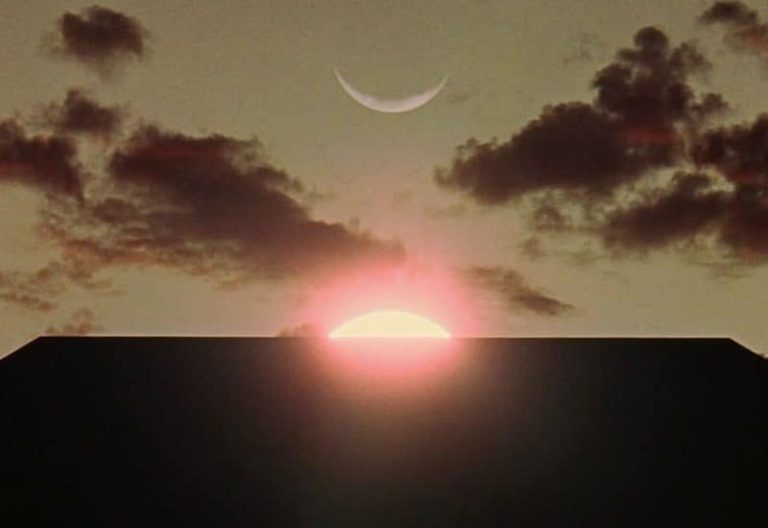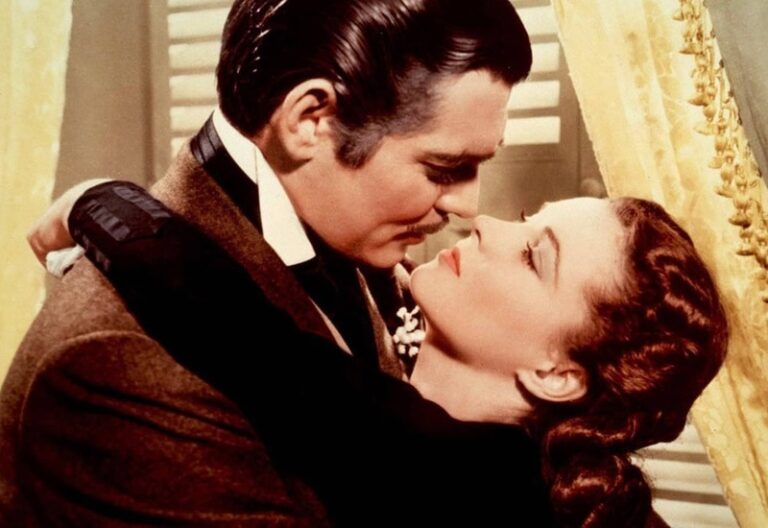days of wind and roses review
film by Blake Edwards (1962)
The first midcentury film that I have seen depicting alcoholism with a pensive earnestness and treating it as a serious disease and addiction. The Days of Wine and Roses exposes the self-destructive nature of addiction at a time when urban dwellers were finding that the world was quickening its pace.
Review by: Aaron Jones | Filed Under: Film Reviews
August 29, 2024
Those who wanted their vision of Camelot within the banality of the 9-5 workforce often had to drink to forget and tow corporate lines, or found it necessary to see beauty or glamor in places it did not occupy while unconsciously selling their souls. It presents us with seemingly elevated characters to see their gradual decline.
While the cracks in the foundation have begun to show, they manifest into the anchors that sink them into the abyss of addiction. Edwards uses time through phases of a relationship that is challenged by the arrival of a daughter, who becomes the audience’s reference for the passing time as the film’s tone descends into darker territory. The story focuses on the despair taking shape in their lives as it becomes more apparent, infecting the rest of their relationship and culminating into a catalyst of vice.
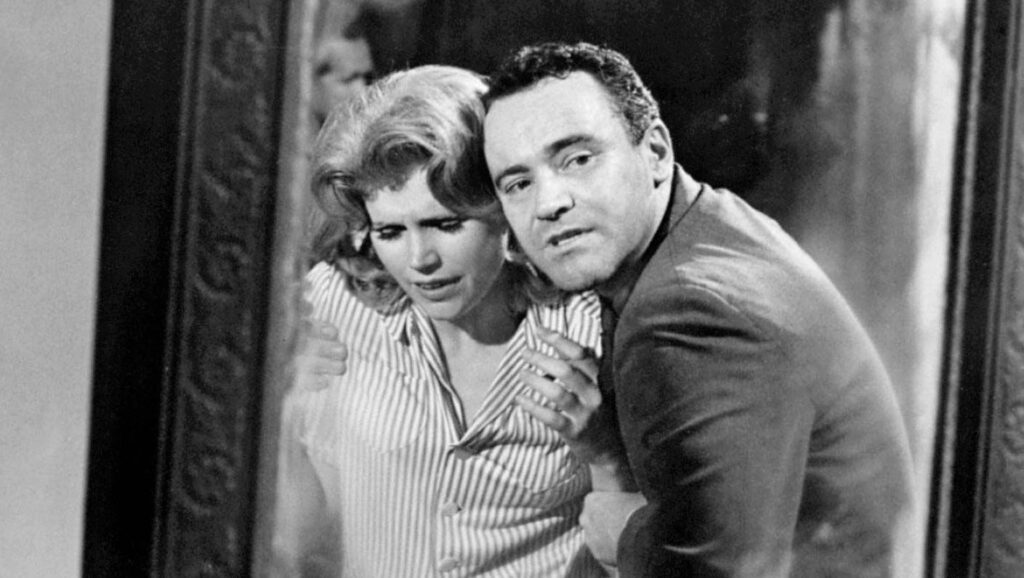
The film methodically depicts covert and mutual alcoholism through fully realized performances by both Jack Lemmon and Lee Remick, at a time when Hollywood had an allergy to showing society’s uglier truths. Edwards centers his film on one of the largest culprits of addiction, using an industry immersed within its throes to display it, including himself. So, one might be hard-pressed to find issues with a film that took so many risks and delivered well-observed awareness of social issues affecting so many with whom the film would cross paths.
That said, there were certain moments in the film that, for me, had such tonal imbalance they felt like empty voids in the narrative. Part of the film wants to progress towards cinema realism but cannot divorce itself from components of the screwball ’60s.
There is a moment when Lemmon is spraying roach spray around the house, and the neighbors complain. Rather than being a momentary pause, it completely takes over, driving the film’s momentum to an abrupt halt while simultaneously diverging into an overinflated comedic gesture. It backfires in unwanted places where I found myself laughing at the film rather than with it.
It also lends itself periodically to overdramatics, where certain scenes find enough credence within themselves that they become contrived and feel sensationalized. And with many films of this time period, some of the most fleshed-out female characters suffer from a lack of independence and male tampering, which dilutes their integrity.
As Remick’s character is berated and insulted by Lemmon, she does what we are supposed to believe all women would do — she becomes disappointed when he does not ask her out on a date. It falls into one of Hollywood’s most ridiculous and problematic tropes: that all beautiful women find all men, especially assholes, irresistible.
Edwards has a reputation for having racist and sexist subtext in his films, so I went into this knowing full well about his history. It is clearly a product of its time, as those elements commonly persist.

Author
Reviewed by Aaron Jones. Based in California, he developed a passion for film from a young age and has since viewed over 10,000 films. His appreciation for the medium led him to film criticism, where he now writes for CinemaWaves, offering analysis of both contemporary releases and timeless classics. In addition to his work here, he has contributed to other publications as well. Feel free to follow him on Instagram and Letterboxd.
The film is based on John Osborne’s play about a love triangle involving an intelligent but disaffected working-class young man (Jimmy Porter), his upper-middle-class, impassive…
Middle-aged Giulietta grows suspicious of her husband, Giorgio, when his behavior grows increasingly questionable. One night when Giorgio initiates a seance amongst…
Shareen and Claire, a lesbian couple living on Staten Island, find themselves ensnared in a vast conspiracy involving a ghost ship of nuclear refuse, ominous television…
In the late 1960s and throughout the 1970s, until mid 1980s, a cinematic revolution unfolded in Hollywood that would forever change the landscape of the film industry. American New…
The studio system was a dominant force in Hollywood from the 1920s to the 1950s. It was characterized by a few major studios controlling all aspects of film production…
In the early 20th century, a cinematic revolution was brewing in the Soviet Union. A group of visionary filmmakers, collectively known as the Soviet Montage School, gathered…

